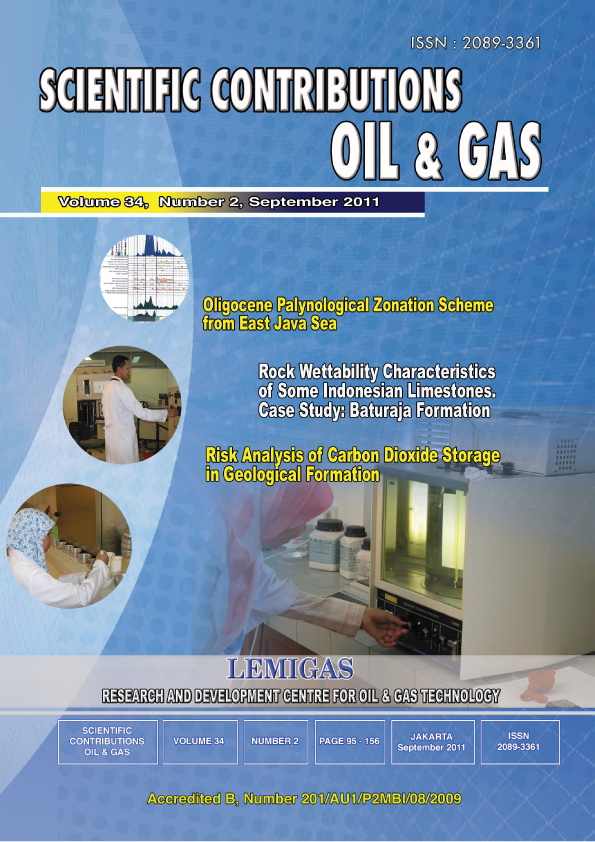Polymer Properties Determination For Designing Chemical Flooding
DOI:
https://doi.org/10.29017/SCOG.34.2.799Keywords:
polyacrylamide (PAM), partially hydrolyzed polyacrylamide (HPAM), mobility controlAbstract
Waterflooding became the standard practice in many reservoirs formation in petroleum industries, the strengths and weaknesses of the methods were quite well established. In particular, the inefficiency of the waterflood oil displacement mechanism as a result of either an unfavorable mobility ratio or heterogeneity was largely identified. Therefore, chemicals injections as the improvement displacement processes had been proposed to support petroleum industries to recover the production of oil. Chemical injection normally consists of alkaline, surfactant, and polymer (ASP). They could be injected as standalone fluid or mixture of fluids; it depends upon the injection fluid design appropriate for particular field. Polymer solution could be prepared for mixtures of injection fluid and or as chase fluid injection which is injected behind surfactant or ASP. The main function of polymer solution primarily is to viscosity the injection water as a mobility control. This work is proposed to determine the important polymer properties which are suitable for mobility control in such EOR plan in the particular field. This field is sandstone reservoir with oil gravity of 23 to 26oAPI and viscosity of 3cp at 90oC. Two kinds of polymers have been chosen such as: HPAM-1 and HPAM-2 and subject to be tested for the properties characteristic. Intensive works have been done to evaluate the bulk polymer properties at laboratory scale which include rheology, filtration, thermal stability, retention/adsorption, and injectivity or permeability reduction tests. The results indicated that HPAM-1 polymer is suitable for injection fluid design for Zone-B while HPAM-2 for Zone-A.References
Green, D.W., Willhite, G.P., 1998, â€Enhanced
Oil Recoveryâ€, SPE Texbook Series Volume
, Henry L. Doherty Memorial Fund of AIME
Society of Petroleum Engineers Richardsons, TX
USA.
Hirasaki, G., Pope, G., 1974, “Analysis of factors
influencing mobility and adsorption in the flow of
polymer solution through porous media†, Soc.
Pet. Eng. J., 14, 337–346.
Sorbie, K.S.D., 1991, “Polymer Improved Oil
Recoveryâ€, Blackie Glasgow and London.
Taber, J.J., Martin, F.D., Seright, R.S., 1997,
“EOR Screening Criteria Revisited-Part 1
and Part 2: Introduction to Screening Criteria
and Enhanced Recovery Field Projectsâ€, SPE
Reservoir Engineering, August.
Downloads
Published
Issue
Section
License
Copyright (c) 2022 SCIENTIFIC CONTRIBUTIONS OIL AND GAS (SCOG)

This work is licensed under a Creative Commons Attribution 4.0 International License.
Authors are free to Share — copy and redistribute the material in any medium or format for any purpose, even commercially Adapt — remix, transform, and build upon the material for any purpose, even commercially.
The licensor cannot revoke these freedoms as long as you follow the license terms, under the following terms Attribution — You must give appropriate credit , provide a link to the license, and indicate if changes were made . You may do so in any reasonable manner, but not in any way that suggests the licensor endorses you or your use.
No additional restrictions — You may not apply legal terms or technological measures that legally restrict others from doing anything the license permits.














